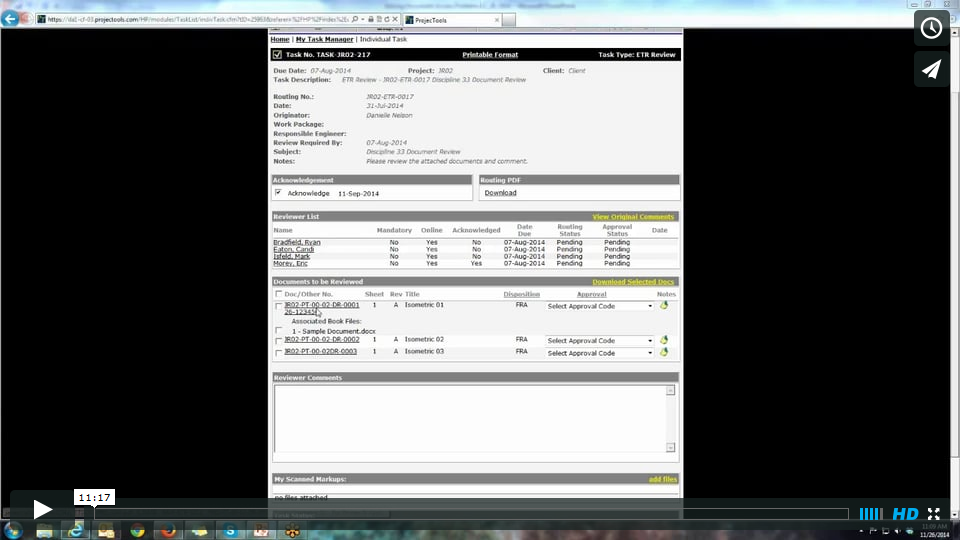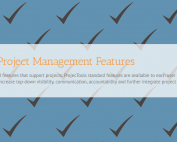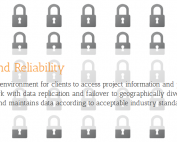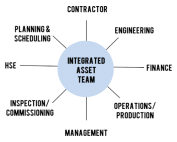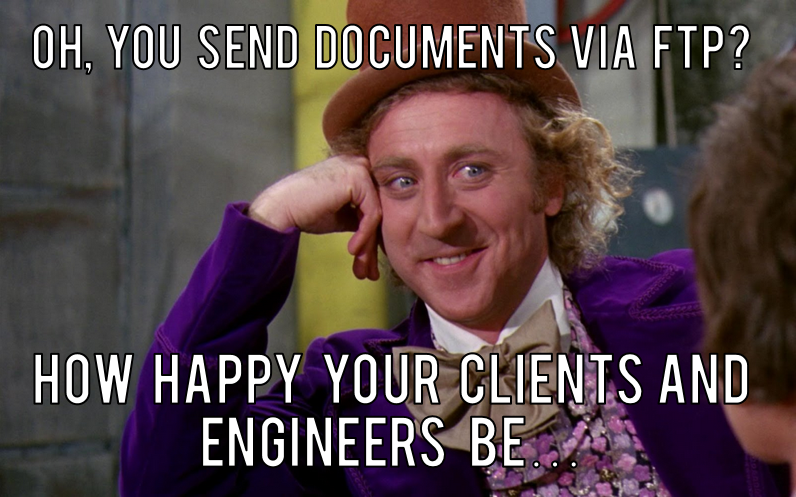Mastering Document Distribution and Access for Global Teams
Welcome to ProjecTools Mastering Document Distribution and Access for Global Teams Demo. Today, we’re going to do exactly this. We’re going to talk about how to master document distribution and access for global teams.
First, we need to talk about what is document distribution and access, here in our environment in 2016? What does failure at these things look like, and what you can do to remedy those failures, shortcomings, or whatever. Then, we’re going to take a look at how ProjecTools does this in our application.
Let’s get started. When you’re talking about document distribution, it’s how your organization delivers documents and revisions to partners, clients, subcontractors, engineering teams, marketing, HR, suppliers, buyers, a whole host of things. Every one of these people and groups that are receiving documents, they have an interest in that document, and they need to access it. They need to access the latest revision and they need to access it on demand. Those are really the three keys to excelling at document distribution and access for global teams.
What does it look like when there are problems? Some typical problems that we see are emails and file servers, generic or rudimentary systems to distribute documents, provide access to their teams. This is decent, it’s a step in the right direction from emails, or just thumb drives, maybe. These document distribution “systems” tend to have a bunch of folder structures and there’s no control over numbering. Each team kind of manages their own thing, in their own way. That creates a silo within that division group, and then confusion when anybody else tries to interact with that group, because there’s no standard. There’s no rhyme or reason. Say group A puts a revision in a sub folder and group B puts a latest revision right out there on top, on the highest level folder and then all the previous revisions down in a sub folder. Just the fact that it’s not standard and requires humans to access and catalogue, results in confusion. Pile on top of that human nature and the whole thing devolves into an inconsistent document storage mess.
There are some other problems, especially in the globalized world that we live in. We work a lot with oil and gas companies, so they have people that are offshore on rigs that need to go access documents. It’s really hard to get it to them because they’re out of the office. If they’re out of the office, how are they going to get into your file servers or your rudimentary systems? If it’s not an online system, these folks are usually out of luck, they have to wait for a helicopter to deliver a thumb drive, or wait on email from a document controller. Those aren’t great. It’s not self-service. Basically, they’re not accessing real-time information either, because there are transit times associated with those.
We also see a lot of problem relating to global teams relying on emails, spreadsheets, and file transfer protocols. These were great 20 years ago. They may have been passable for you in the past 20 years up until now, and it might even be what you’re using now, but it’s really not the best way. People forget, all the time, to add a captions to email, where they attach the wrong file to emails. Spreadsheets, in order to be correct, require one person to be running them. Even then, if you’re using something like Dropbox to manage your spreadsheets and to track that latest revision, have it accessible to all, sometimes it doesn’t save right. It’s like you have 30 different copies of the spreadsheet, and you really don’t know who’s done what to each, and it turns into a nightmare.
FTP, File Transfer Protocols, that’s really frustrating for folks. Usually that’s employed when people are geographically separated and you need to transmit documents. It’s just kind of a clunky process and it’s prone to failure. I know I’ve gone to transmit a file via FTP and have it crash half way through it. It’s sometimes a three hour cycle to transmit the file, and it’s either demoralizing, or it’s devastating to your reputation. It could even impact your career or advancement opportunities, if this unreliability gets projected on to you and your team. That is terribly unfortunate because you’re seen as unreliable.
Another problem is numbering confusion, revision confusion, permission confusion, and disposition confusion. All around confusion. I kind of talked about this earlier, when teams manage things their own way and kind of just hope for the best, and think they can integrate different teams into their team and out, but if they’re not using the same conventions or using any level of control that means anything to another group, it’s all really just pointless.
Another thing is most application and systems, they really don’t provide document access. They provide a warehouse, but they don’t provide access. More than that, they don’t provide access with the context. With that document when you find it, you find the latest revs, you can see tasks that have been executed with this particular document. Access is permission based. There’s the meta-data that you need such as release dates, revision, revision purpose, and things like that, that really tell you where this document is in its life cycle, what’s been done to it, and who has done those things to it.
The last thing, and we hear this all the time, is that in order to find a robust system, that’s clever enough to handle your particular business, it costs an arm and a leg. I’m here to tell you that that’s not true. ProjecTools is very affordable. There are some other affordable systems out there, depending on what you’re looking for. If you’re still using emails, spreadsheets, and File Transfer Protocols to transmit documents, store documents, log and manage documents, there are way better options than that even, that don’t quite reach the standard of ProjecTools.
Let’s take a look at document access and how you guys can totally own the game and make your employees more happy, make your subcontractors, partners, your other teams, and your clients even more happy, and really make your clients believe in you; that you have robust systems in place and a level of control that other companies don’t have.
How to win. The first step is to get an online system that is going to centralize everything to eliminate all of the confusion associated with that. This really helps out with your offshore or out of country folks, by giving them instant access to the latest revision. This is pretty key here. You want to find a system that will make it very crystal clear what revision’s the latest. I know clients don’t like paying for wasted engineering work and things like that, but that’s what happens when people don’t have access to the latest rev. They end up working on superseded data that’s probably going to need to be redone.
More than that … Just an add on to that, if you don’t know what the latest rev is and you send that to a supplier or something and they build it, you’re going to be out hundreds of thousands of dollars probably, if not millions. Depending on the piece of equipment, if the engineering documents that they’re building from are not the latest provision, could have huge impact to the project and at least that PO.
The third thing is, if you want to win at document control, you’ve got to eliminate frustration. The way to do that is to get rid of your email, which has huge deficiencies and your FTP, which has connection errors, frustration, and so forth. You want to make your numbering standardize and that the meta-data is all there with your documents. You want task based workloads that remove all of the ambiguity from tasks, all the uncertainty as far as who should be doing what and when is it due. Thereby, eliminating a lot of the excuses that we hear all the time, as to why things aren’t done, are done incorrectly, or aren’t done on time.
I do want to tell you that you’re starting out strong here, by being with us today. You’re really interested in knowing how to win and you’ve kind of gotten there. You found an affordable system, ProjecTools, that is clever enough to handle the demands of engineering teams, legal teams, procurement, HSE, marketing, entertainment, construction. All kinds of groups use ProjecTools for all kinds of projects.
The greatest part about it … Well, I hesitate. One of the greatest things about it is that we can have you running and experiencing value in ten days, or your money back. We’ll come out there, get you set up, get your team trained, get you totally implemented, and if after three months, you guys aren’t satisfied and we are not delivering like we say we will, we’ll hand you your money back, if we can’t fix the problem. If you don’t want us to fix the problem, we’ll hand you your money back and we’ll never talk to you again. We’ve never really had to exercise that because we’re pretty good at what we do. I hope you take advantage of this and see what we can do for you.
Now, I’m going to get into ProjecTools application. I’m going to prove to you guys that ProjecTools gets suppliers, subs, clients, and partners all working in the same system, coherently, and that the application provides online access and role-based permissions, and that the application has search and segmenting tools that make grouping super quick and easy, and that we provide access to a clearly identified latest revision and the document history right there in one spot, for anybody who needs it and should be seeing it.
Now, let’s get into the application. Let me log out here. We’ll log in. You’ll notice that this is right from ProjecTools, that we’re logging in. This takes us to ProjecTools Application Homepage. You can do a lot of different things here, but the document distribution and access for most users, is going to be right here from this page.
The first place I want to look is the document distribution matrix. This is like a personal document register. I can see every document that I have permission to see, right here in this register. Let me take you through a couple of the things about this, that I just think is super awesome. It’s really our marquee tool here for document distribution. Real quick, I want to point out that you can search by latest revision or all revisions. You can make sure your teams always have access to the latest revision and the other documents proceeding that, so they build a good context of why that information is the way it is.
Also, I want to draw your attention up here to the document number. When you’re in this document distribution matrix, you can display and search by the document number, your standard document number. This will be … If my company owns this instance of the tool, this would be my document number, or the other document number if we’re working with a key partner on a particular project, we can add their document number in here as well, or the client document number.
Let’s go back here to standard number and let’s start searching around for some files. I want to show you how to group and segment very easily. Let’s take a look at PI. All right, just by typing in PI, I can see all the PNID’s for this project. I can see the document number. I can flip back and forth from the different document numbers here. I can also expand all of this, to see the routing and transmittal history. I can see commented files, so if I’ve sent out a routing and people have executed it inside of the system, or even outside of the system, I can see all of their markups here. It pulls up in a viewer, so I don’t have to download it and mess up my desktop space, or anything like that. I can still download it here, if I want to. I can actually see the revisions here in PDF form or your native form, you know, a lot of people have DWG’s, documents, excel files, CAD files, and so forth.
Let’s take a look at another segmenting tool here. If you want to get really specific, you can go down to document or use multiple levels of your document number. Here, I can see all of the drawings using these numbers, whatever these mean to my company. Talk about document access done right. Obviously you can define what your numbering levels are, but just by typing in a string that the document number contains, I can narrow down what I’m looking for, which might be the grid-drawing blocks for Deck AA. I can find that very easily.
Let’s clear that out. Let’s expand this, and I want to take your attention to the routing transmittal history. If you click on this, it brings up a screen that tells you where this document’s gone, who’s seen it, and when all of that back and forth happened. It’s a really useful feature to see. If you have questions or just want to see what’s being going on with a particular document, you can go on, and find it.
One of the last things that I want to show you is how you can and a lot of people manage contracts in our systems, so if you go find your project and you look for your project, you can sort by contract type. You can see here, that I’ve searched for all my inspection contracts here, and I have some MSAs for inspections. I can see all the information regarding that.
We’ve already talked about how an engineer can find their files. We can talk about how people administering contracts can find their files. This is also really useful for buyers, and suppliers even, or clients, if they want to come in, and see documents by PO.
If your engineers want to come in, or even your inspectors want to come in, and see all of the documents by system, they can do that as well. This is a very powerful tool for segmenting, and grouping your documents into something that’s useful for the individual user.
The last thing that I want to show you here, is that you can download sets of documents. If you want to pull up all of the standard files for a particular segment, you can download them. It’ll download straight to your desktop in a zip file and makes that really easy.
You can also search by rev purpose, rev date, and so forth, but you all are smart people, so you totally get the power of this and how clever filtering will improve your document distribution and access for your global teams. Let’s go take a look at something else.
Down here is the task manager. Most people would log into the application because they get a notifciation in their corporate inbox saying, “Hey, you got a task to complete in ProjecTools.” We can see that there are a lot of different tasks here. We have RFIs, engineering technical routings, flyer data routings, request for purchase, queries, notifications, and so forth.
Since this is talking about document distribution and access, let’s take a look at our distributions here. This is a very simple distribution that we’re going to look at. This is basically just letting somebody know that, “Hey, this document that concerns you, has been released, or a new revision has been released.” You can click on it, open it up in the viewer, whatever you need to do here. It’s basically an acknowledgement that you are aware that a new rev to this document is coming out. Cool.
Let’s go take a look at a more robust task. Probably one that’s a little bit more typical. Let’s take a look at an engineering technical routing. This has been sent out for review. This has been sent out for approval and I am the approver. I can see here that there are a bunch of other reviewers that have taken a look at this document and they have done things to it. I can open each of them up in here. I can view all of the original comments. This is going to pull it up in PDF format and I can see everybody’s markups, all layered on top of each other. As the approver, I can go, pick and choose, which ones I agree with, and add a disposition to each individual document.
Down here are the three documents that need to be reviewed. I’m going to draw your attention to the numbering here. The top one is our standard document numbering, here at ProjecTools. The second line is our other document number, and the third line is our client document number. This makes it very easy to integrate your key partners and your clients into the review and approval process. You can speak their language. You don’t have to have them guessing or trying to learn your document numbering system. Let’s face it, what client is ever going to learn your document numbering system? Moreover, if they do, are they going to be happy about it? Hell no. It’s a great tool to really cater to those groups, get them on board, win them over, wow them, and make them huge fans of yours.
Let’s take a look at this particular document here. Right away, I have some … Some red text is jumping off the page at me. I can see who made this particular notation. I can see who made this notation and all these notations. This is the PM, project manager. I can make my own notations here, like some arrows, boxes, text fields, and some sticky notes. Just typical stuff that is really helpful when you’re doing these things. I can also see the review history over here. The document manager said to see the notes here. This guy, Mark, said that, “Item ID is not matching up. See his markup.” It looks like the item ID’s here aren’t matching these ones. The PM Manager said that he added the missing items. He’ll get this fixed but let’s move this document forward to the next revision.
It looks like the project manager said, “Here’s the missing items. Don’t worry about it. Let’s move this forward. It shouldn’t hold us back.” Following with the approver, sorry the PM’s wishes, we can add a disposition of, “Approved as Noted, Item ID’s not matching up, see markup. Revise and Resubmit. Cool.
You can save those. You can go in and do all these for the different documents that you have. Add your dispositions here. Add any comments overall and then, add a disposition for this thing. Is it Approved as Noted? Is it Rejected? Is it Approved, and so forth? Now, when you approve this and submit it, it’s going to go back to the document controllers for processing. They can either get the engineer to merge all the changes onto one and issue a new rev for review and approval, or send it out to the client, whatever the case may be here.
When it comes to document distribution and access, here at ProjecTools, we are of the school of thought that, “The internet is key to working together.” This is an online application, so your users, whether they’d be off an oil rig in Korea, if you have inspectors in Australia on site, if you have buyers in Aberdeen, whatever the case may be, everybody can log in to one application and do all their work. They can take part in review and approvals, so distribution. Then, they can have that self-service access that is just so hard to find with a lot of other applications and apps, such as email distributions and folder structures, onsite servers, or Dropbox, and it just takes all the mess out of that and gives everybody all the meta-data they need, to see where a document’s at and basically get the latest revision, so they can be in the know, and work together coherently.

